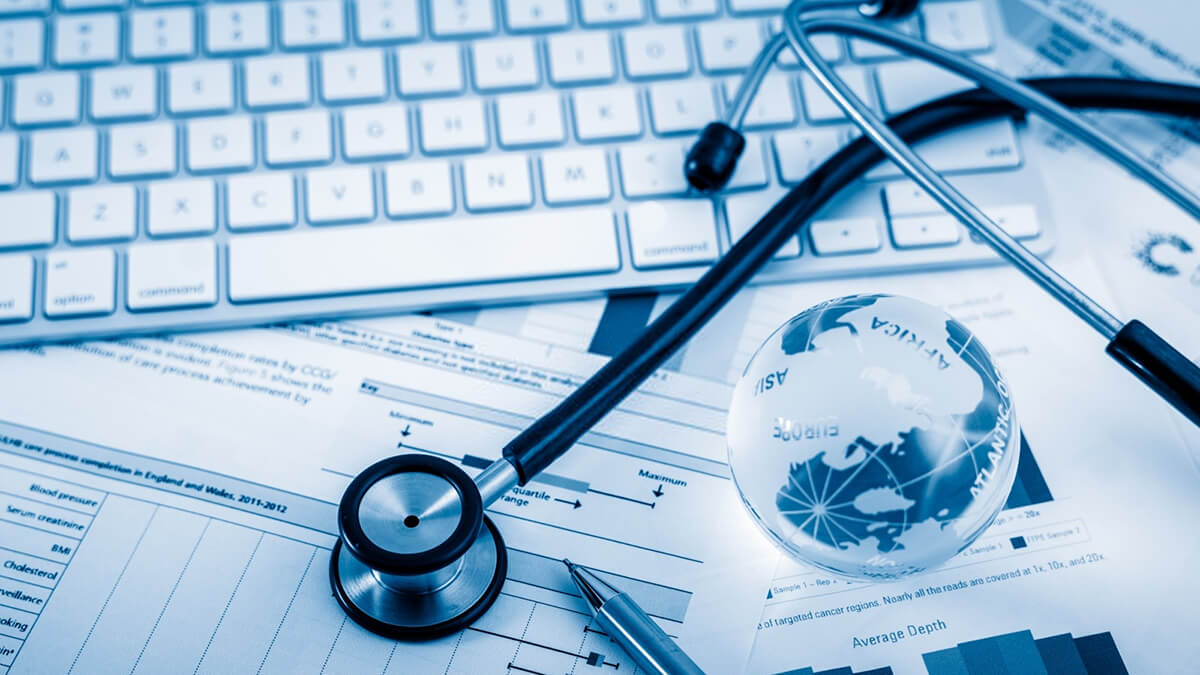Medical Administration Careers: Exploring Task Opportunities and Salaries
Medical Administration Careers: Exploring Task Opportunities and Salaries
Blog Article
Ideal Practices in Medical Management for Improving Effectiveness and Decreasing Expenses
In the ever-evolving landscape of health care, the pursuit of best techniques in medical administration is extremely important for boosting effectiveness and curbing expenses. By incorporating sophisticated technologies such as digital health and wellness records and telemedicine, medical care carriers can enhance operations and boost individual care. Innovation alone is not a cure all; enhancing source allotment and cultivating collective communication amongst care groups are equally vital. As organizations aim to stabilize high quality and cost, what approaches should be prioritized to accomplish these dual goals? The solution to these questions hold the secret to a more sustainable medical care system.
Leveraging Advanced Technology
In today's swiftly evolving healthcare landscape, leveraging sophisticated innovation is no much longer optional yet essential for efficient medical management. The assimilation of electronic remedies right into healthcare systems has changed the means facilities operate, improving processes and enhancing client care. Electronic Health And Wellness Records (EHRs) are essential, offering extensive individual data that can be accessed immediately by accredited personnel, hence reducing redundancy and reducing errors. By centralizing patient information, EHRs remove the demand for difficult paperwork and facilitate smooth interaction amongst medical care carriers.
Telemedicine is an additional technological advancement that has actually changed individual interaction. It uses benefit for both patients and health care professionals by enabling remote consultations, which can lower the requirement for in-person visits and enhance appointment organizing. Additionally, telehealth systems can extend medical care access to country or underserved areas, connecting gaps in care distribution.
Additionally, using Artificial Knowledge (AI) and artificial intelligence is coming to be progressively widespread in predictive analytics, enabling very early discovery of potential health and wellness concerns and more educated decision-making. These modern technologies, when integrated efficiently, can improve diagnostic precision and individualize patient treatment strategies, inevitably resulting in enhanced health care end results and operational efficiency.
Optimizing Resource Allowance
By purposefully managing resources such as personnel, tools, and funds, medical care facilities can considerably enhance their functional efficiency, boost individual results, and decrease unneeded expenses. The very first step in maximizing source appropriation includes carrying out a comprehensive analysis of present possessions and identifying locations where resources might be underutilized or overextended.
Prioritizing source appropriation based upon client requirements and solution demands is important. This involves straightening resources with high-demand areas, such as emergency situation treatment or specialized treatments, to ensure timely and reliable patient treatment. Implementing versatile staffing models can also enhance labor resources by adjusting employees allotment in action to fluctuating person volumes. Additionally, welcoming telemedicine and other technical solutions can relieve physical source constraints by using alternative opportunities for patient-provider communications.
Economic sources should be diligently kept track of and designated with critical foresight to support both short-term functional demands and lasting institutional goals. This consists of investing in training programs that boost team competencies and adopting energy-efficient practices that decrease functional expenses (medical administration). Inevitably, an optimized resource allocation technique promotes a sustainable health find more info care atmosphere that is receptive, reliable, and monetarily sensible
Streamlining Operations Procedures
When medical care centers purpose to boost operational efficiency, improving process processes ends up being an essential focus. Effective workflows decrease redundancy, remove unneeded actions, and boost sychronisation among healthcare specialists. This technique not only increases service shipment however likewise enhances the top quality of patient care.

Next, modern technology integration plays a substantial role in enhancing workflows. Carrying out digital wellness records (EHRs) and digital doctor order access (CPOE) systems reduces documentation, lessens human mistake, and guarantees info is easily accessible to all relevant workers. In addition, leveraging telemedicine systems can streamline individual appointments and follow-ups, reducing the stress on physical infrastructure.

Eventually, streamlined workflows result in set you back reductions and enhanced individual complete satisfaction, promoting a much more sustainable healthcare environment.
Enhancing Data Management
Structure upon structured operations, enhancing data management becomes an essential component in advancing medical care management. Effective data management systems are critical for maintaining exact patient documents, enhancing decision-making, and guaranteeing compliance with governing requirements. By executing robust information management solutions, healthcare centers can improve the quality of person treatment while concurrently reducing functional expenses.
One key facet of improving data administration is the integration of innovative electronic wellness document (EHR) systems. These systems help with the smooth exchange of patient information throughout different divisions, decreasing replication of tests and decreasing errors. A properly designed EHR system supports information analytics, allowing doctor to determine fads and make notified choices concerning individual care.
Additionally, safeguarding individual data is critical. Taking on extensive cybersecurity procedures, including file encryption and normal audits, ensures the stability and discretion of sensitive info. This not just protects clients however additionally maintains the organization's online reputation.
Purchasing personnel training is one more critical variable. Educating health care experts on information monitoring methods boosts visit this web-site their ability to efficiently use innovation, causing boosted person end results. To conclude, improving information administration via innovative modern technology and comprehensive training is important for achieving efficiency and cost reduction in medical administration.
Fostering Collaborative Communication
An important element ahead of time medical administration is fostering collaborative interaction amongst healthcare professionals. Effective interaction is extremely important for making certain smooth individual treatment, enhancing therapy end results, and minimizing errors. By motivating open dialogue and coordination throughout multidisciplinary groups, health care organizations can enhance their operational effectiveness and lower unnecessary costs.
Central to this approach is the assimilation of communication technologies such as electronic health documents (EHRs) and safe messaging platforms, which facilitate the quick exchange of critical person info. These tools make it possible for medical care providers to accessibility and share information in genuine time, making sure that all staff member are notified and aligned in their decision-making procedures. Regular team meetings and interdisciplinary rounds can even more promote a society of collaboration and liability.
Educating programs concentrated on boosting communication abilities are also vital. Eventually, cultivating joint interaction leads to boosted healthcare delivery and cost financial savings.

Verdict
Incorporating advanced technology, such as electronic health records and telemedicine, alongside maximized source allocation and streamlined process processes, is crucial for enhancing efficiency in medical administration. Efficient information administration and cultivating collective communication among health care teams are essential for minimizing redundancies and improving treatment quality. By prioritizing precautionary treatment and taking part in top quality enhancement campaigns, healthcare organizations can accomplish substantial price financial savings and improved patient end results, consequently making sure sustainable medical care distribution in a progressively complicated environment.
Report this page